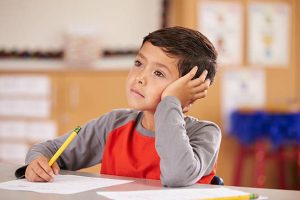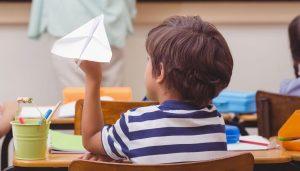What’s the difference between being distracted and not paying attention?
The difference between being distracted and not paying attention might seem subtle, but it’s a significant distinction for kids with ADHD or learning disabilities. Imagine watching your child struggle in a world that demands constant attention and focus. You see them daydreaming in class, forgetting instructions, or getting lost in their thoughts during a simple conversation. As a parent, it’s heart-wrenching to see your child with ADHD or a learning disability grappling with tasks that seem easy for others. You may ask yourself, “Why can’t they just pay attention?” Understanding the easy distractions of a child with learning disability or ADHD is crucial in providing the support they need.
It’s not a matter of willpower or choice; their brains are wired differently. This blog aims to clarify this distinction and provide insights into how you can better understand and support your child. As renowned ADHD expert Dr. Edward Hallowell states, “ADHD is a neurological condition that affects the brain’s executive function, making it difficult to focus, organize, and manage time.” Your child’s struggles are not a reflection of their character or potential but rather a manifestation of their unique neurological makeup.
The Nature of Distraction

Distraction is an external force. It’s the bright, shiny object, the unexpected noise, or the fleeting thought that captures attention momentarily. For a child with ADHD, distractions are everywhere. Their brains are constantly seeking stimulation, making it challenging to stay focused on one task for an extended period.
For a child with a learning disability, distractions can also be overwhelming. The cognitive load required to process information is significantly higher, making it easier for external stimuli to disrupt their focus. Simple background noise, a classmate’s movements, or even the texture of a classroom seat can pull their attention away from learning.
Not Paying Attention: A Deeper Challenge

Not paying attention, on the other hand, is often an internal struggle. It’s not about a passing distraction but a fundamental difficulty in sustaining focus. This can be particularly pronounced in kids with ADHD or learning disabilities. Their brains struggle with executive functions—skills that include working memory, flexible thinking, and self-control.
For a child with ADHD, not paying attention is often a result of their brain’s difficulty in prioritizing tasks. They might intend to focus but find it incredibly challenging to filter out the less important stimuli. In contrast, a child with a learning disability might not pay attention because they’re overwhelmed by the effort required to decode the information presented to them.
Strategies to Help Your Child
Understanding the difference between being distracted and not paying attention is the first step toward providing effective support. Here are some strategies to help your child with ADHD or a learning disability manage their focus:

Create a Structured Environment:
Structure and routine are essential for children with ADHD and learning disabilities. Predictability helps them know what to expect, reducing the cognitive load required to switch tasks.
Break Tasks into Smaller Steps:
Breaking down tasks into manageable steps can make them less daunting. Use checklists and visual aids to help your child stay on track.
Incorporate Movement Breaks:
Physical activity can help improve focus. Short, frequent breaks for movement can prevent your child from becoming overwhelmed and help them reset their attention.
Use Assistive Technology:
Tools like noise-canceling headphones, fidget devices, and apps designed to aid focus can be beneficial. Technology can help filter out distractions and support sustained attention.
Provide Positive Reinforcement:
Celebrate your child’s efforts and successes, no matter how small. Positive reinforcement builds their confidence and motivation.
Conclusion
Understanding the easy distractions of a child with learning disability or ADHD involves recognizing the difference between being distracted and not paying attention. By creating supportive environments, breaking down tasks, incorporating movement, and using assistive technology, you can help your child navigate their unique challenges.
Remember, your child’s struggles with attention are not a reflection of their abilities or potential. It’s important to understand the difference between being distracted and not paying attention. With patience, empathy, and the right strategies, you can support your child in thriving despite their challenges. As you journey alongside your child, remember the words of Dr. Russell Barkley: ‘ADHD is not a moral failing; it is a brain-based disorder that requires understanding and support.